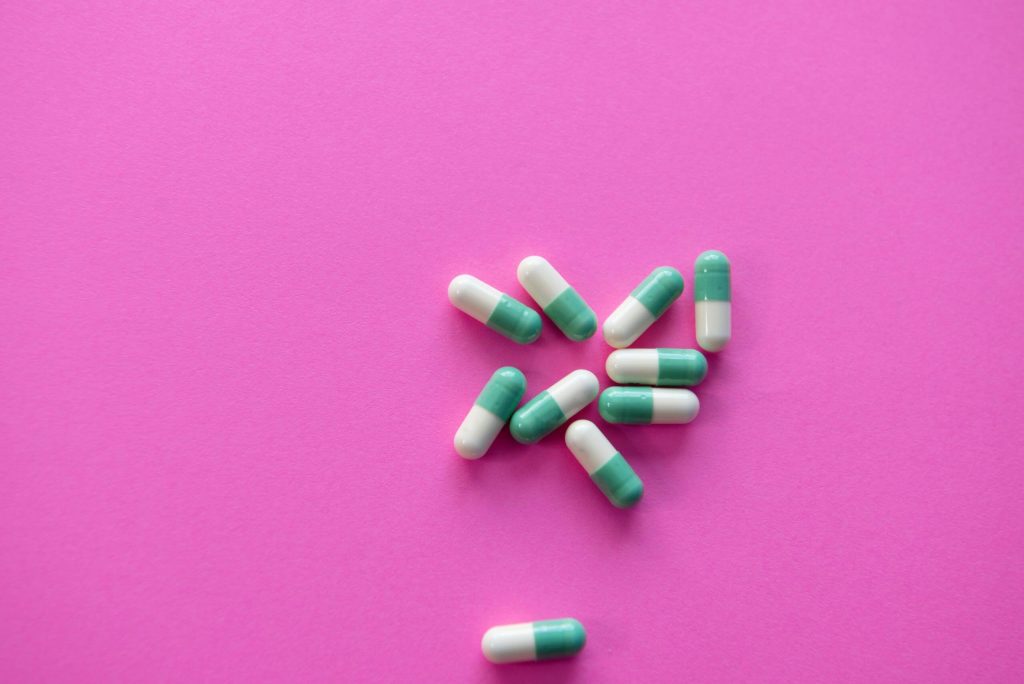Student-centric advice and objective recommendations
Higher education has never been more confusing or expensive. Our goal is to help you navigate the very big decisions related to higher ed with objective information and expert advice. Each piece of content on the site is original, based on extensive research, and reviewed by multiple editors, including a subject matter expert. This ensures that all of our content is up-to-date, useful, accurate, and thorough.
Our reviews and recommendations are based on extensive research, testing, and feedback. We may receive commission from links on our website, but that doesn’t affect our editors’ opinions. Our marketing partners don’t review, approve or endorse our editorial content. It’s accurate to the best of our knowledge when posted. You can find a complete list of our partners here.
How to Become a Pharmacist: A Guide for HS Students
 By
Zach Skillings
By
Zach Skillings 
Zach Skillings is the Scholarships360 Newsletter Editor. He specializes in college admissions and strives to answer important questions about higher education. When he’s not contributing to Scholarships360, Zach writes about travel, music, film, and culture. His work has been published in Our State Magazine, Ladygunn Magazine, The Nocturnal Times, and The Lexington Dispatch. Zach graduated from Elon University with a degree in Cinema and Television Arts.
Full BioLearn about our editorial policies

Maria Geiger is Director of Content at Scholarships360. She is a former online educational technology instructor and adjunct writing instructor. In addition to education reform, Maria’s interests include viewpoint diversity, blended/flipped learning, digital communication, and integrating media/web tools into the curriculum to better facilitate student engagement. Maria earned both a B.A. and an M.A. in English Literature from Monmouth University, an M. Ed. in Education from Monmouth University, and a Virtual Online Teaching Certificate (VOLT) from the University of Pennsylvania.
Full BioLearn about our editorial policies

Are you a high school student thinking about becoming a pharmacist? As you may know, this isn’t an overnight process. Becoming a pharmacist is a long journey that requires a lot of hard work. If you are committed to pursuing a career in pharmacy, read on to learn about how you can become a pharmacist!
What does a pharmacist do?
Pharmacists dispense medications prescribed by healthcare professionals and explain how to use them properly. Pharmacists fulfill many duties, including safely dispersing medication, educating patients about medication, and overseeing a staff of pharmacy technicians and aides.
If working in a hospital or clinical setting (27% of pharmacists do), they may also advise doctors and medical staff about drug selections and dosages. According to the Bureau of Labor Statistics, pharmacists also work in pharmacies and drug stores (40% ), food and beverage stores (8%), and ambulatory healthcare services (5%).
Apply to these scholarships due soon
More scholarships for HS seniorsHow much does a pharmacist make?
Pharmacists rank among some of the most highly compensated professionals. According to the Bureau of Labor Statistics, the median annual pay of pharmacists in 2020 was $128,710. However, salaries vary based on location.
How to become a pharmacist
The short answer is that to become a pharmacist, you need to earn your Doctor of Pharmacy (PharmD). This is a long process that requires many years of schooling. Read on to learn about the specific steps you’ll need to take to achieve this goal.
High School
During your high school years, it’s important to establish a strong foundation of math and science knowledge. This will serve you well throughout your pursuit of a PharmD. Consider taking advanced level biology, chemistry, physics, and math classes. Having a number of these classes on your high school transcript will show demonstrated interest to college admissions officers.
Extracurriculars in STEM and healthcare are also a great way to prepare you for a career as a pharmacist. Here’s a few extracurricular ideas:
- Working in a nursing home
- Science Olympiad
- HOSA (Future Health Professionals, formerly Health Occupations Students of America)
It’s also a good idea to shadow a pharmacist, meaning that you observe them at work. This experience will give you hands-on experience in pharmacy and help you understand the nuances of the role. If you don’t have a direct connection to a pharmacist, talk to your guidance counselor to learn more about internships or opportunities in your area.
See also: Top STEM scholarships
Choose a degree path
After you earn your high school diploma, it will take six to eight more years of schooling to earn your PharmD. The amount of time varies depending on the specific path you take to earn your PharmD.
Undergraduate + Graduate School (6-8 years)
This is the most traditional route to becoming a pharmacist. Within this route, you have the option of attending a pharmacy school after two years of undergraduate study. Other students choose to complete their undergraduate program and earn their bachelor’s degree before applying to pharmacy school.
Although a bachelor’s degree isn’t required to apply to most pharmacy schools, some pharmacy schools give preference to bachelor’s degree holders. This means you might have a better chance of acceptance to a PharmD program if you have your bachelor’s. Earning an undergraduate degree also offers more flexibility to students who are unsure of their career aspirations. Say you complete your undergraduate studies and you have second thoughts about becoming a pharmacist. At least you’ll have your bachelor’s degree to fall back on.
What you’ll study
As far as what you’ll study during your undergraduate years, you’ll be on a pre-pharmacy track. This isn’t a program or major, but rather a collection of required classes. This means you can technically major in anything and be pre-pharmacy. But since there are so many required science prerequisites for PharmD programs, many students choose to major in science. In particular, biology is a common major for pharmacy applicants.
Upon completion of your undergrad studies (whether you earn your bachelor’s degree or not) you’ll likely have to pass the PCAT (Pharmacy College Admission Test) to qualify for admission into a PharmD program. Over 85 percent of pharmacy programs require applicants to submit scores from their PCAT. Once accepted to a PharmD program, you’ll spend four years working toward your doctorate’s degree.
Dual Degree Program (6 years)
For students looking to earn their PharmD in a shorter amount of time, a dual degree is a great option!
- Dual degree pharmacy programs allow you to earn both your bachelor’s degree and your PharmD
- These programs are commonly referred to as “0-6” programs because they typically take 6 years to complete, with the first two years being spent on pre-professional study and the following four years are spent in a professional pharmacy degree program
- Students in “0-6” programs don’t need to take the PCAT (Pharmacy College Admission Test)
If you’re absolutely sure that you want to become a pharmacist, “0-6” programs are the shortest and most cost-effective route to earning your PharmD. However, these are competitive programs that require a minimum GPA along with SAT or ACT scores.
Early Assurance Programs (6-8 years)
Some pharmacy schools offer early assurance programs in which students start on a direct path towards their PharmD immediately out of high school. Students in these programs are guaranteed admission into a pharmacy school after completing at least two years of undergraduate coursework and requirements. These programs may or may not be on an accelerated timeline. However, the benefit of these programs is that students don’t have to worry about taking the PCAT and applying to PharmD programs.
Pharmacy School
Regardless of the path you take to get to pharmacy school, this is a necessary step on your way to becoming a pharmacist. During pharmacy school, you can expect to take courses in drug design, drug evaluation, and the effect of drugs on the body.
You’ll also learn how to effectively advise patients, dispense medication, and manage day-to-day business logistics. Here’s a list of the top pharmacy schools in the U.S. Additionally, here is a complete list of pharmacy schools approved by the Accreditation Council for Pharmacy Education.
See also: Top pharmacy scholarships
Licensing
After earning your PharmD, you’ll need to become licensed in order to become a practicing pharmacist. To do this, you’ll be required to pass two exams:
The North American Pharmacist Licensure Exam (NAPLEX)
- The NAPLEX tests your ability to make safe choices for your patients
The Multistate Pharmacy Jurisprudence Exam (MPJE)
- The MPJE is a test of federal and state pharmacy laws
While these are the only required exams, you may be expected to meet additional requirements depending on where you live and the type of work you plan to do.
Residency (Optional)
Once you receive your PharmD and become licensed, you may choose to complete a residency to gain hands-on experience and further your education. A pharmacy residency is a paid post-graduate program consisting of hands-on training and supervised practice. Residency programs are available in a variety of settings, including:
- Hospitals
- Community pharmacies
- Home care and long-term care facilities
- Ambulatory care settings
- Managed care facilities
The type of residency you pursue should be based on your career objectives. Residencies are broken down into two categories: Post Graduate Year 1 (PGY1) and Post Graduate Year 2 (PGY2).
It should be noted that completing a residency is not required to become a pharmacist. However, residencies provide students with a competitive advantage in the workforce. For instance, you should probably consider a residency if you’d like to work in a non-retail setting such as a hospital or clinic. Without a residency, it’s typically harder to gain employment in a clinical setting. This means you will be limited to working in a drug store or pharmacy.
Pharmacists may be eligible for: Public student loan forgiveness
Key Takeaways
Frequently asked questions about becoming a pharmacist
How many years does it take to become a pharmacist?
Do pharmacists go to med school?
What is the best degree to become a pharmacist?











